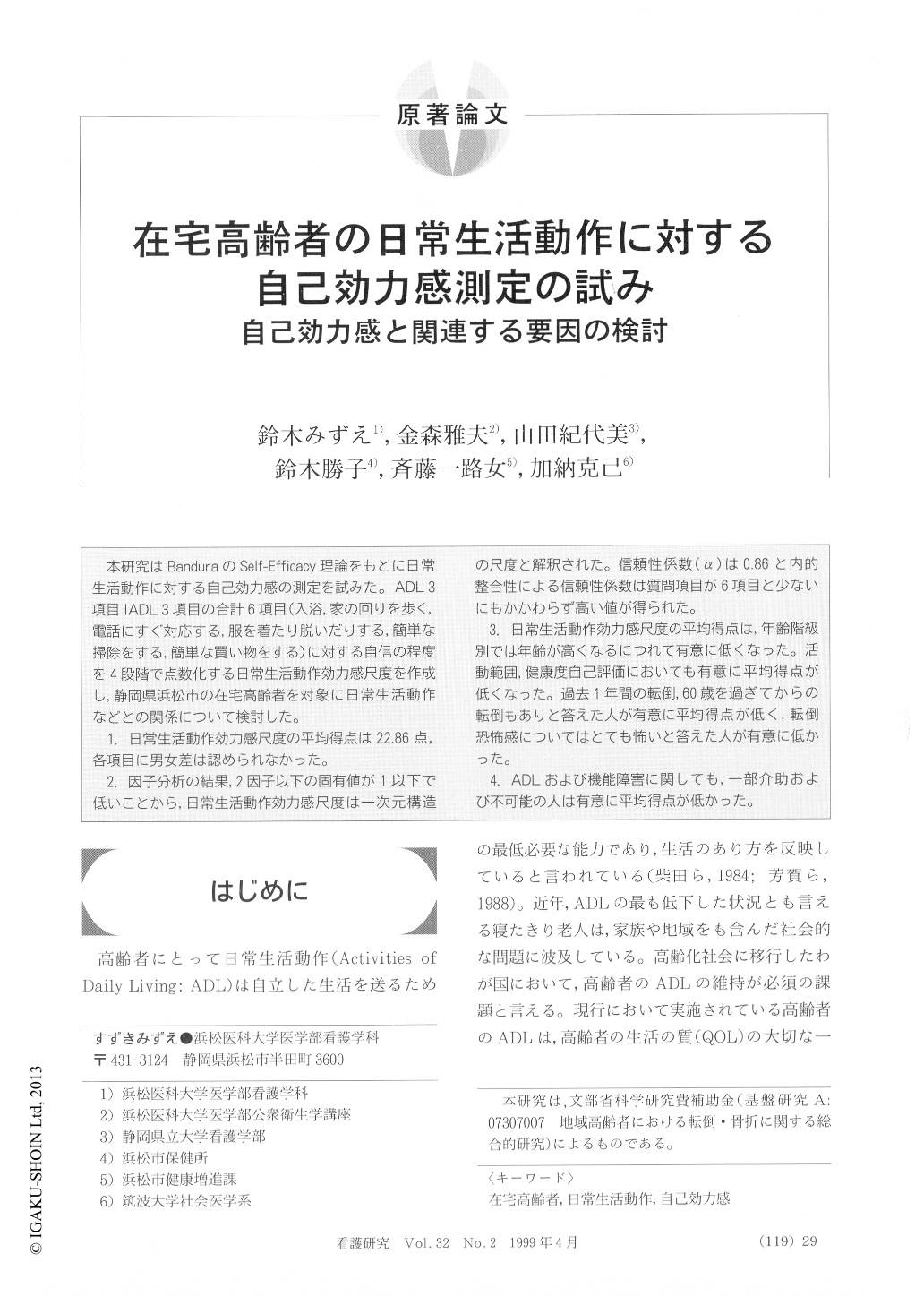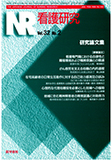Japanese
English
- 有料閲覧
- Abstract 文献概要
- 1ページ目 Look Inside
- サイト内被引用 Cited by
本研究はBanduraのSelf-Efficacy理論をもとに日常生活動作に対する自己効力感の測定を試みた。ADL 3項目IADL 3項目の合計6項目(入浴,家の回りを歩く,電話にすぐ対応する,服を着たり脱いだりする,簡単な掃除をする,簡単な買い物をする)に対する自信の程度を4段階で点数化する日常生活動作効力感尺度を作成し,静岡県浜松市の在宅高齢者を対象に日常生活動作などとの関係について検討した。
1.日常生活動作効力感尺度の平均得点は22.86点,各項目に男女差は認められなかった。
2.因子分析の結果,2因子以下の固有値が1以下で低いことから,日常生活動作効力感尺度は一次元構造の尺度と解釈された。信頼性係数(α)は0.86と内的整合性による信頼性係数は質問項目が6項目と少ないにもかかわらず高い値が得られた。
3.日常生活動作効力感尺度の平均得点は,年齢階級別では年齢が高くなるにつれて有意に低くなった。活動範囲,健康度自己評価においても有意に平均得点が低くなった。過去1年間の転倒,60歳を過ぎてからの転倒もありと答えた人が有意に平均得点が低く,転倒恐怖感についてはとても怖いと答えた人が有意に低かった。
4.ADLおよび機能障害に関しても,一部介助および不可能の人は有意に平均得点が低かった。
In this study, we attempted to devise a selfefficacy scale for activities of daily living (ADL) for the elderly, based on Bandura's self-efficacy theory. We developed an activities-of-daily-living self-efficacy scale (ADLSES), in which levels of confidence for three ADL items and three IADL items, totaling 6 items (taking a bath, walking outside near their homes, answering a phone call, changing clothes, cleaning a room, and buying a few things), were rated on a 4-point scale. We then investigated the relationship between the ADLSES score and the ADL scale for the elderly living in their own homes in Hamamatsu city, Shizuoka Prefecture.
1. The overall mean ADLSES score was 22.86, and no gender differences was observed in the mean score for any item.
2. Results of factor analysis demonstrate that the characteristic value for 2 factors or less is equal to or lower than 1, suggesting that the ADLSES is a scale with a one-dimensional structure. Although there were only 6 questions in the questionnaire, the Cronbach's coefficient (α) was 0.86, which is a high value by intrinsic consistency.
3. Elderly subjects were divided into age groups. The mean ADLSES score was significantly lower with advancing age. The mean ADLSES score was significantly low level of activity in a graded fashion, or with a decrease in the self-evaluated level of health. The score was also significantly low in the elderly who had experienced a fall in the previous year or since reaching the age of 60 and the elderly who reported that they were “very afraid of falling.”
4. With respect to ADL and functional disorders, the mean ADLSES score was significantly lower for the elderly who required assistance for some of the activities, and who were unable to care for themselves. The above ADLSES score results are accordance with Bandura's self-efficacy theory. It will be necessary to verify the reliability and validity of the ADLSES scores, by investigating the predictive value and the other variance in longitudinal studies.

Copyright © 1999, Igaku-Shoin Ltd. All rights reserved.


